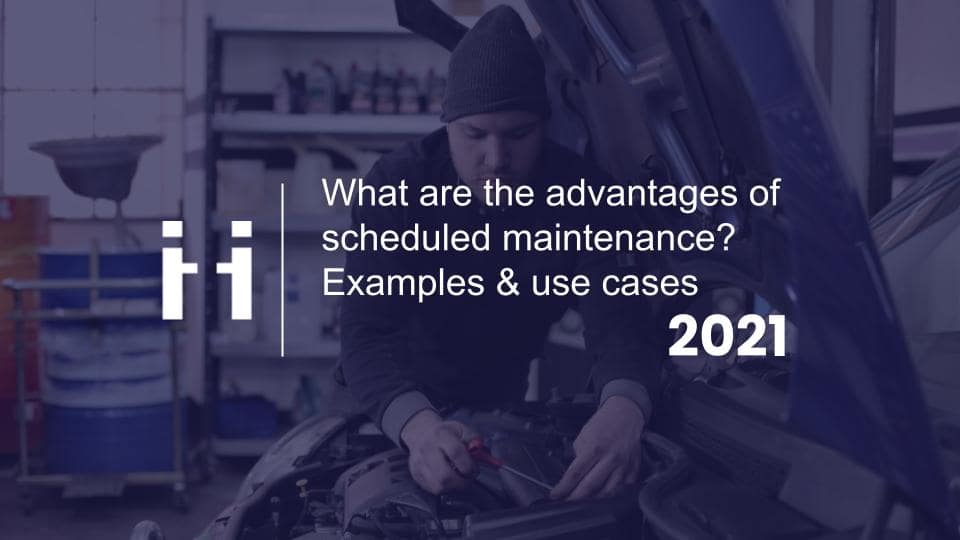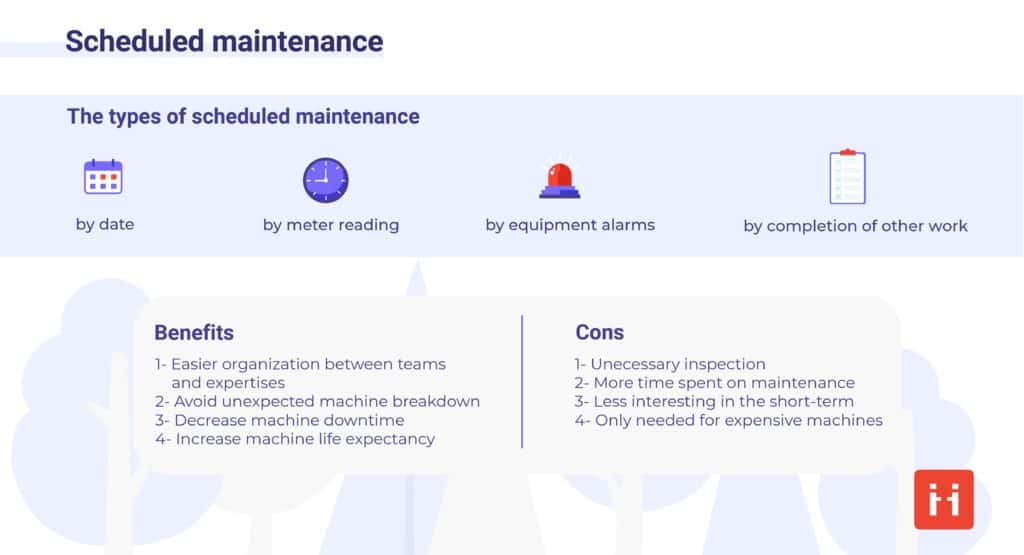
Share this article
Share this article
Taking care of your business assets is the most important thing you can ever do for your company. This is because it will allow the company to profit in the long run as there will be no need to replace the equipment in the workplace regularly.
Scheduled maintenance can help you improve the condition of your assets and cut down on unnecessary costs. Apart from that, it will promote safety in the workplace. Keep reading to understand more about this maintenance program.
It is among the regular activities carried out in the industry. It refers to a task that must be performed at a particular time and given to a technician. It can be a one-time or recurring task and may include adjustments, planned shutdowns, regular service, etc.
Scheduled maintenance is a process that focuses on when a specific task will be completed and who will do it. It includes who and when the job will be done. The details can be indicated on paper, a CMMS software work order, or a spreadsheet. The tasks are usually done depending on the work requests or manufacturer’s recommendations.
First of all, scheduled-based maintenance can offer a strong return on investment. This will benefit several operational categories in your business. Apart from that, it will eliminate equipment breakdown, increase productivity and also boost assets life expectancy.
Another thing that this maintenance strategy brings is safety in the work environment. This is because it eliminates equipment breakdowns and also increases equipment performance. It generally helps improve reliability and employees confidence.
Any industrial facility must perform scheduled and unscheduled maintenance at some point. These two types of maintenance are different and can affect a few things like productivity, service life, and efficiency depending on which one is being used.
Many industries usually perform scheduled-maintenance, which is known to technicians. It is planned and mostly done at a specific time. On the other hand, unscheduled maintenance happens when an issue that must be addressed immediately has occurred. For example, if a machine has stopped working.

Scheduled and planned maintenance sound the same to many people, but they are not. Although both of them are types of preventive maintenance, there are a few differences between them.
Planned maintenances include details of how and which work must be completed. It simply indicates the services, tools, materials, and tasks that will solve a particular problem. In short, it begins by identifying the issue and then details all the tools and tasks that will help complete the work.
When it comes to the scheduled maintenance, it shows who should complete the job and when it should be done. The main aim of this maintenance work is to ensure all the work has been completed on a particular day or time.
This type of maintenance is usually used or considered when a company or an organization has recurring work. The scheduler must have a plan, meaning he should assign a technician in advance and set a timeline for completing the task.
A good example is when a company’s vehicle must undergo oil changes every 3,000 miles. Another example is when an important machine requires lubrication to improve its performance after every three months.

Many industries that deal with heavy machinery prefer this maintenance program to ensure everything in the workplace is running smoothly. Here are some of the benefits this maintenance plan offers:
• It minimizes maintenance costs
• It improves workplace safety
• Workplace culture is upheld
• It extends asset life expectancy
• It decreases downtime
Scheduled maintenance tasks may include filter exchange, inspection, oil change, cleaning, lubrication, etc. To understand more about this maintenance plan, below are a few cases that may help.
Industrial preventive maintenance is usually carried out regularly to keep equipment in better shape. Several maintenance tasks are performed to prevent equipment failure. The schedule is done depending on the machine operating time or calendar. This helps avoid unexpected or unplanned shutdowns and also allows everything to run normally.
Like any other machine, cars require routine maintenance to ensure they run properly. According to CarsDirect, after every 3,000 to 7,000 miles, oil and its filters should be changed. After 15,000 to 30,000 miles, air filters should be replaced. After 35,000 to 50,000 miles, the battery should be changed, and after 60,000 miles, brake fluid, pads, the radiator should be changed and the entire vehicle inspected.

Unscheduled maintenance can incur many unnecessary expenses, which is why it is crucial to find a solution that can keep your company’s assets healthy. Using AI solutions and machine learning can significantly help as it allows you to identify or predict the lifespan of a particular machine.
You can then use this information to keep your assets in good condition through a maintenance schedule. Update work orders with logs of past maintenance, documents containing important information, photos, etc. This will prevent unexpected machine breakdowns and unnecessary costs that may be used to repair and purchase new equipment.
"Technology requires constant hands-on management to ensure that the business is adapting to the change in its DNA — and to ensure that future shifts, both internal and external, are accompanied by the appropriate flex of its tech stack."
Maria Martinez, Chief Operating Officer, Cisco Tweet
In most cases, maintenance services are scheduled, given a deadline, and tasks are performed and completed on time. But sometimes, this is usually not the case, and maintenance becomes overdue. When this happens, it can be challenging to decide what task should be prioritized.
Scheduled maintenance critical percent can help you do that. It is a tool that allows you to organize preventive maintenances. With the tool, you can calculate your PMs and finally determine which one should go first.
As a business owner, it is crucial to protect your assets before their due date. The best way to do this is to use scheduled maintenance. It helps you minimize costs and promote workplace safety. You can also use special tools to help you determine which assets in your business need regular maintenance.
Free E-book available now!